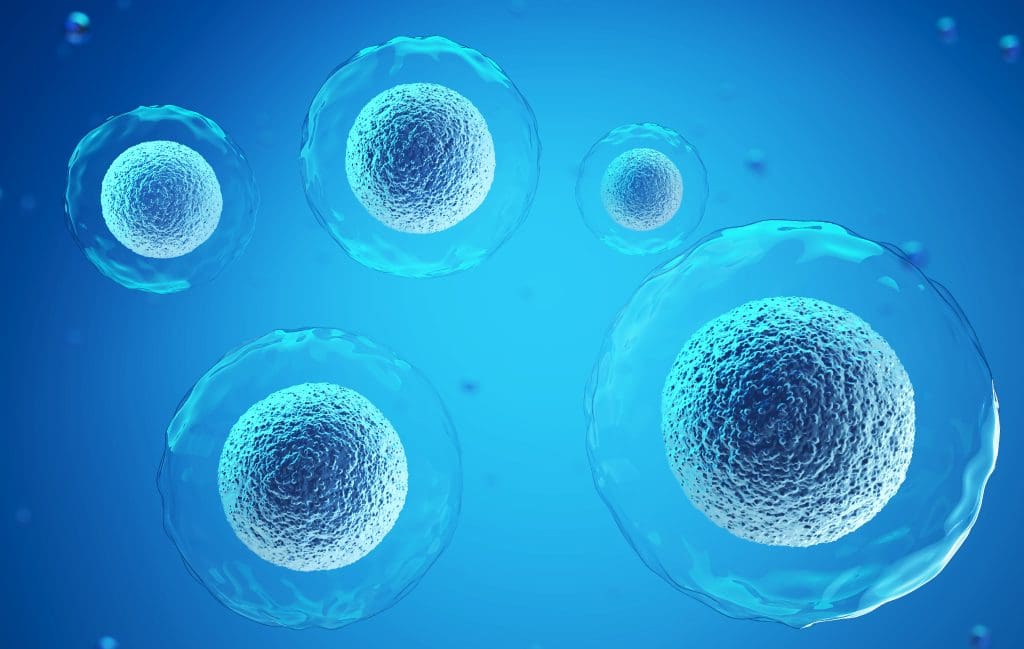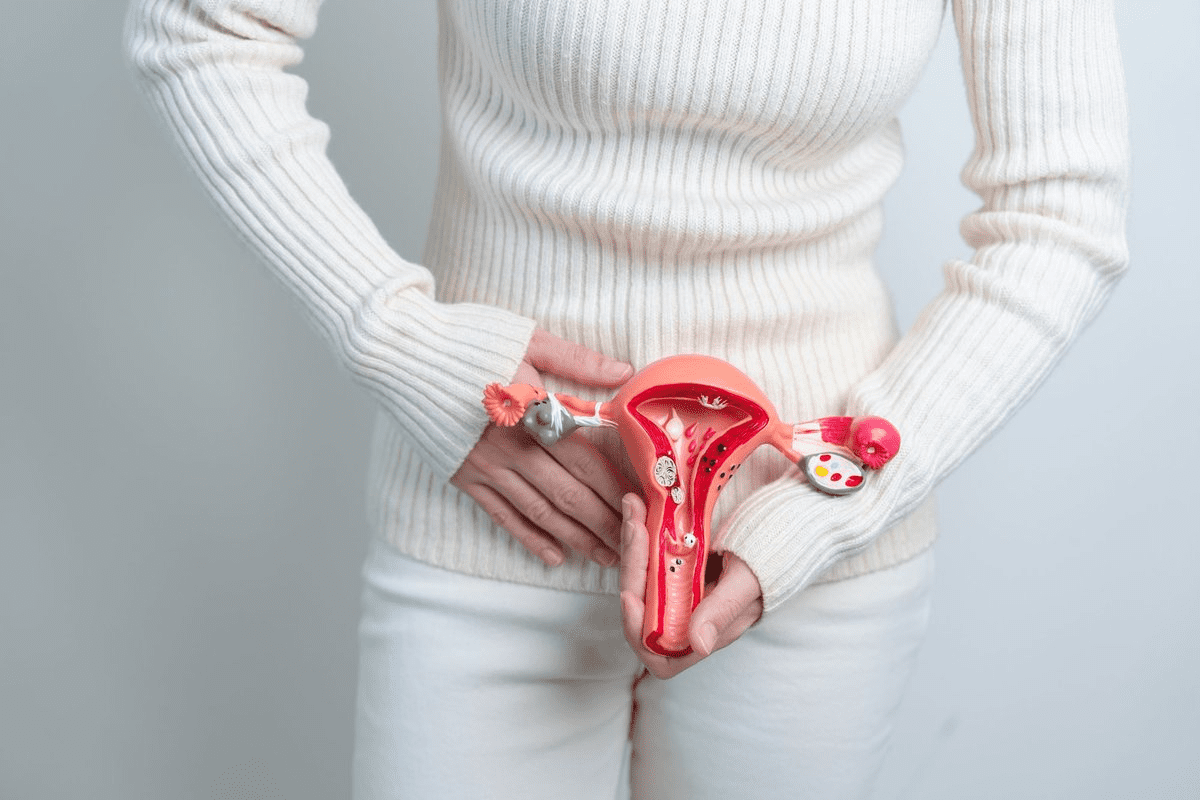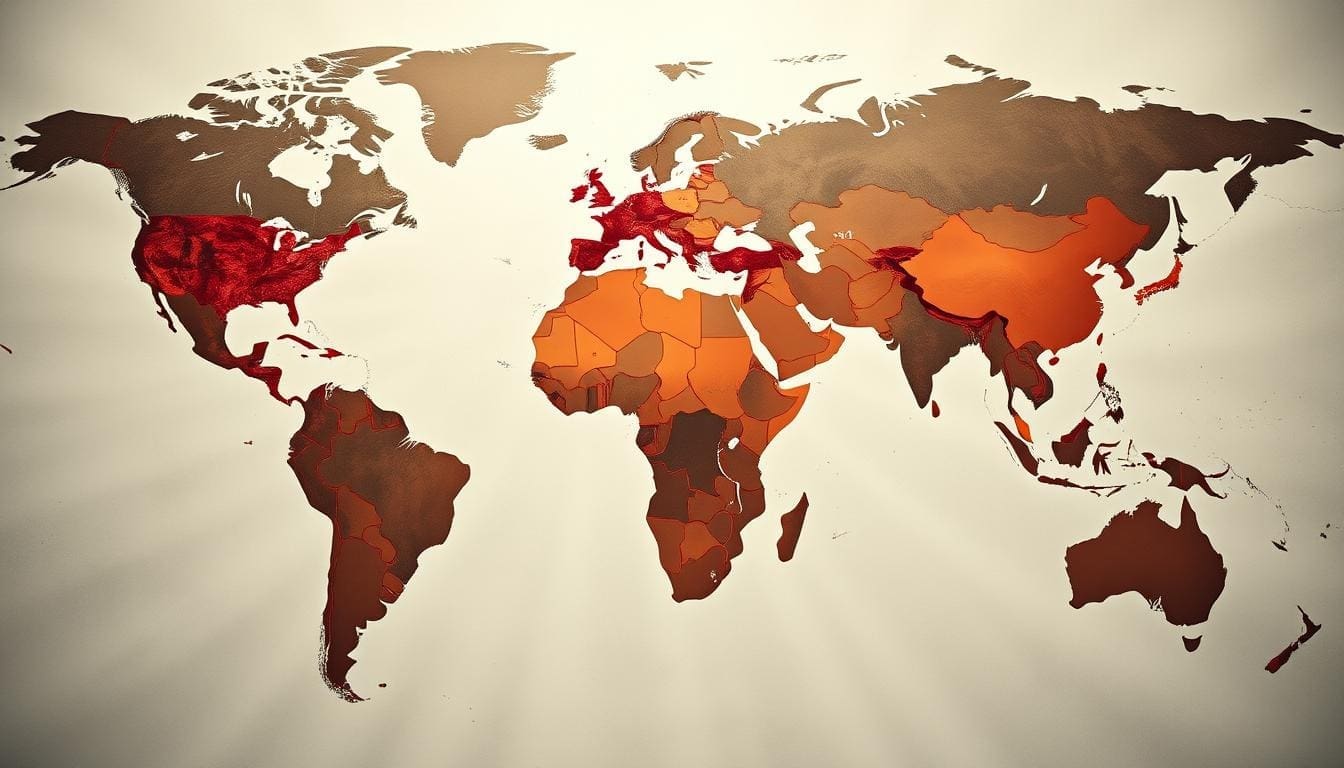Last Updated on September 19, 2025 by Hozen
Stem cell research has changed medicine a lot. Pluripotent stem cells lead this change. They can turn into any cell in our body, making them key for fixing damaged tissues.
But, stem cell research has big challenges. Induced pluripotent stem cells (iPSCs) are a big concern. Studies show they might not be safe or work well for long.
Using iPSCs cells in treatments is just starting. Many obstacles must be cleared before they can help many people. Knowing these problems is key to making stem cell research better.
Key Takeaways
- The promise of pluripotent stem cells in fixing damaged tissues is huge.
- There are worries about the safety and how well iPSCs work.
- Stem cell research has big challenges to face.
- iPSCs could be very useful in medicine in the future.
- Getting past these problems is essential for stem cell therapy to improve.
Understanding Pluripotent Stem Cells and Their Types

Learning about pluripotent stem cells is key for medical progress. These cells can turn into almost any cell in the body. This makes them very useful for healing and research.
Embryonic Stem Cells vs. Induced Pluripotent Stem Cells
Embryonic stem cells (ESCs) come from embryos and can become any cell type. Induced pluripotent stem cells (iPSCs) are made from adult cells that are changed to be like ESCs. The main difference is where they come from and how they are made.
iPSCs have changed the game by giving us a lot of cells for study and treatment without the ethics issues of ESCs. But making iPSCs is hard and can be risky.
Totipotent vs. Pluripotent Stem Cells: Key Differences
The terms totipotent and pluripotent describe stem cell abilities. Totipotency means a cell can become any cell type, including those in the embryo and placenta. Pluripotency means a cell can become every somatic cell type, but not placental cells.
Knowing the difference between totipotency and pluripotency helps us understand stem cell abilities. Totipotent cells can make a whole organism. Pluripotent cells can make all cell types in an organism, but not placental cells.
The Development of Induced Pluripotent Stem Cell Technology
The creation of induced pluripotent stem cell technology is a big step in stem cell research. It lets scientists turn adult cells into a state like embryonic stem cells, without using embryos. This breakthrough in induced pluripotent stem cells (iPSCs) has opened doors for new treatments, disease studies, and drug tests.
Yamanaka Factors and Cellular Reprogramming
In 2006, Shinya Yamanaka found Yamanaka factors, a key moment in iPSC tech. He found four special genes “ Oct4, Sox2, Klf4, and c-Myc “ that can turn adult cells into pluripotent ones. This method, called cellular reprogramming, lets iPSCs turn into many different cell types.
As
“The ability to reprogram human somatic cells to a pluripotent state has revolutionized the field of stem cell biology, providing a powerful tool for basic research and possible therapeutic uses.”
Using Yamanaka factors is now a common way to make iPSCs. Scientists are always working to make this process better.
Evolution of iPSC Generation Methods
Generating iPSCs has changed a lot over the years. At first, scientists used viruses to add the reprogramming genes, but this had risks. Now, they use safer methods like Sendai virus vectors and episomal vectors.
- Improved reprogramming efficiency
- Reduced risk of genetic modification
- Enhanced scalability for therapeutic applications
New ways to make iPSCs are being explored, like using small molecules. As iPSC technology gets better, it could lead to new treatments and better medicines.
Ethical Concerns Surrounding Pluripotent Stem Cells
Using pluripotent stem cells in research and therapy raises many ethical questions. These cells can turn into any cell type, which is promising for medicine. But, their use is debated.
Embryonic Stem Cell Controversies
Embryonic stem cells (ESCs) are a big concern. Making ESCs often means destroying embryos. This raises big ethical questions. Many think embryos could grow into humans and shouldn’t be used for research.
Key ethical issues with ESCs include:
- The moral status of embryos and the ethics of destroying them for research.
- Concerns about the possibility of ESCs being used to create human clones or chimeras.
- The risk of uncontrolled growth or tumors when ESCs are used in treatments.
Ethical Considerations Specific to iPSCs
Induced pluripotent stem cells (iPSCs) avoid some ESCs’ ethical problems by not needing embryos. But, they bring their own ethical worries.
Some of the ethical concerns related to iPSCs include:
- The chance of genetic mutations during reprogramming, which could cause problems.
- Concerns about the long-term safety and stability of therapies made from iPSCs.
- Issues with getting informed consent from donors for cell reprogramming.
In summary, pluripotent stem cells, including ESCs and iPSCs, have great medical promise. But, their use is filled with ethical challenges that need careful thought and solution.
Technical Challenges in Induced Pluripotent Stem Cell Generation
Creating induced pluripotent stem cells (iPSCs) is a complex task. It faces many technical challenges. These issues affect how well and reliably iPSCs can be made.
Low Reprogramming Efficiency
One big challenge is the low success rate in making iPSCs. Turning somatic cells into pluripotent cells is hard. The success rate can change a lot based on the method used.
Several factors can affect how well cells are reprogrammed. These include the type of cells used, the reprogramming factors, and the culture conditions. For example, using viral vectors to add reprogramming factors can work well. But it might also add unwanted genetic material, which could harm the iPSCs.
- The choice of reprogramming factors (e.g., OCT4, SOX2, KLF4, and MYC)
- The method of delivering these factors (e.g., viral vectors, episomal vectors, or mRNA)
- The culture conditions, including the media and matrix used for cell growth
Time-Consuming and Labor-Intensive Processes
Another challenge is how long and hard it is to make iPSCs. The process has many steps, from picking and preparing cells to checking the final iPSC colonies.
The reprogramming process can take weeks or even months. During this time, the cells need constant care. This long process uses a lot of lab resources and raises the chance of contamination or culture failure.
- Preparation of somatic cells for reprogramming
- Delivery of reprogramming factors and subsequent cell culture
- Identification and isolation of iPSC colonies
- Validation of iPSC characteristics, including pluripotency and genomic stability
In summary, the challenges in making iPSCs, like low success rates and long, hard processes, show we need more research. We must work to make iPSC technology better, safer, and more reliable.
Genetic Instability and Mutation Risks in iPSCs
The process of making iPSCs can lead to genetic instability. This is a big problem for using them in treatments. This instability comes from how the cells are reprogrammed and the type of cells used.
Chromosomal Abnormalities in Reprogrammed Cells
Chromosomal problems are a major worry with iPSCs. These issues can happen during the reprogramming, like aneuploidy or chromosomal rearrangements. Research shows that these cells can be unstable, which might cause teratoma formation or other bad effects in treatments.
The type and amount of chromosomal problems can change. It depends on how the cells are reprogrammed, the type of cells used, and the culture conditions. For example, viral vector-based reprogramming might lead to more genetic issues than other methods.
Somatic Mutations During the Reprogramming Process
Somatic mutations during reprogramming are another big problem. These can happen because of DNA copying errors or exposure to harmful agents. The reprogramming itself can also cause new mutations, which might lead to oncogenic transformation.
Studies have found that iPSCs can have somatic mutations from the original cells and new ones from reprogramming. These mutations can affect how well and safely iPSCs work. This makes it very important to check and understand the genetics of iPSCs well.
In summary, genetic instability and mutation risks are big challenges with iPSCs. It’s key to understand these problems to find ways to fix them. This will help make sure iPSCs are safe and work well in treatments.
Epigenetic Abnormalities in Induced Pluripotent Stem Cells
Creating induced pluripotent stem cells (iPSCs) involves big changes in how genes are turned on and off. This process, called epigenetic reprogramming, changes somatic cells into pluripotent ones. But, it’s not always perfect and can cause problems.
Incomplete Epigenetic Reprogramming
One big problem in making iPSCs is incomplete epigenetic reprogramming. When cells are reprogrammed, not all old epigenetic marks are removed. This leaves behind some marks that can affect how the new cells behave and what they can become.
Key issues with incomplete epigenetic reprogramming include:
- Retention of somatic cell epigenetic memory
- Incomplete activation of pluripotency-associated genes
- Failure to fully silence somatic cell-specific genes
Epigenetic Memory and Its Implications for Cell Function
Epigenetic memory is when old epigenetic marks stay with the new cells. This can impact how well these cells work and what they can turn into. For example, cells from different origins might have different marks that guide their development.
This memory is a big deal for using iPSCs in medicine. It’s important to figure out how to deal with it to make sure these cells are safe and work well in treatments.
Strategies to address epigenetic memory include:
- Optimizing reprogramming protocols to minimize residual epigenetic marks
- Using small molecules to modulate epigenetic reprogramming
- Carefully selecting the source cell type for iPSC generation
Tumorigenic Potentia: A Major Disadvantage of Pluripotent Stem Cells
Pluripotent stem cells have a big problem: they can turn into tumors when used in treatments. Their ability to become any cell type is both a blessing and a curse. This makes them risky for use in humans.
Teratoma Formation Risks in Clinical Applications
Teratomas are a big worry when using these cells in treatments. These tumors have different types of tissues, like hair and muscle. They come from all three germ layers. This risk is because these cells can become any type of cell.
Studies show that these cells can turn into teratomas in mice. This is a big concern for using them in humans. It’s not just iPSCs; ESCs also have this risk.
Strategies to Mitigate Tumor Formation
Scientists are working on ways to lower the risk of tumors from these cells. One idea is to make the cells differentiate better. This means fewer undifferentiated cells in the treatment.
- Purification techniques to remove undifferentiated cells from the cell population before transplantation.
- Suicide gene therapy, where a gene is introduced that can be activated to kill the transplanted cells if they begin to form tumors.
- Encapsulation technologies that isolate the transplanted cells from the rest of the body, potentially preventing tumor spread.
These methods are being studied to make stem cell treatments safer. By tackling the risks of tumor formation, we can unlock the full benefit of these cells.
Immunogenicity Concerns in iPSC-Derived Therapies
As we move forward with iPSC-based treatments, it’s key to tackle immunogenicity. This term means how well a substance can trigger an immune response. It’s a big worry for iPSC therapies.
Autologous vs. Allogeneic iPSC Transplantation
The way we transplant iPSCs affects how much of an immune reaction there will be. There are two main methods: autologous and allogeneic.
- Autologous Transplantation: This uses a patient’s own cells, turning them into iPSCs, and then into the needed cell type. It’s safer because the cells match the patient’s own.
- Allogeneic Transplantation: This uses donor iPSCs. It’s cheaper and can be used for many people, but there’s a bigger chance of the immune system rejecting the cells.
Even with autologous iPSCs, there’s a chance they might show foreign antigens. This could make the immune system recognize them.
Immune Rejection Mechanisms and Possible Solutions
It’s important to know why immune rejection happens. It often occurs because the transplanted cells show foreign antigens.
To lower this risk, researchers are looking at a few options:
- Genetic Modification: Changing the cells to reduce their ability to trigger an immune response.
- Immunosuppressive Therapies: Using drugs to stop the immune system from attacking the transplant. But, these drugs can have side effects.
- Encapsulation Technologies: Putting the cells in a protective layer. This keeps the immune system out while letting the cells work.
Creating safe and effective iPSC therapies means we must think about immunogenicity. Research is ongoing to find ways to avoid immune rejection. This will help us use iPSC technology to its fullest.
Challenges in Induced Pluripotent Stem Cell Differentiation and Culture
Induced pluripotent stem cells (iPSCs) are making big waves in regenerative medicine. But, turning these cells into specific types and keeping them alive in the lab is tough. This is a big hurdle in using iPSCs for new treatments.
Variability in Differentiation Between iPSC Lines
One big problem is that different iPSC lines don’t always behave the same way. This can be due to:
- Genetic Background: The genes of the cells used to make iPSCs can affect how well they can change into different types.
- Reprogramming Method: The way iPSCs are made can also change their genes, which impacts their ability to change into different types.
- Culture Conditions: The environment where iPSCs grow, including the food they get, can also change how well they can change into different types.
It’s important to understand and fix these issues to make iPSCs more reliable.
Difficulties in Maintaining iPSC Cell Lines Long-Term
Keeping iPSCs alive for a long time is another big challenge. These cells can change their genes and epigenetic marks over time. This can lead to:
- Genetic Drift: Over time, the cells can get genetic changes that might affect how they work.
- Epigenetic Alterations: Changes in how genes are turned on or off can also impact how well the cells can change into different types.
To solve these problems, scientists are looking into better ways to grow and check the health of iPSCs.
Creating standard ways to grow and change iPSCs is key to getting past these challenges. By tackling the issues of variability and long-term survival, scientists can make the most of iPSCs for new treatments.
Clinical Application Barriers for iPSC-Based Therapies
iPSC-based therapies show great promise for treating many diseases. But, there are several barriers to overcome.
iPSC technology has changed regenerative medicine. It offers a potentially endless source of cells for treatments. Yet, moving these therapies from the lab to patients is complex and faces many challenges.
Safety Concerns in Human Trials
Safety is a big issue in using iPSC-based therapies in humans. The risk of tumors, like teratomas, is a major concern. This risk comes from iPSCs’ ability to become many cell types, but also to form tumors.
To lower these risks, scientists are finding ways to make iPSCs safer. They are checking iPSC lines carefully, improving how cells are made, and adding safety features. These features can kill off harmful cells.
Challenges in Developing Effective iPSC Cell Therapy Protocols
Creating good cell therapy protocols is hard. It involves making iPSCs into the right cell type, making sure they work well after being transplanted, and making enough for patients.
Protocols must also deal with differences in how different iPSC lines work. They need to make sure the cells stay stable and work well over time. Scientists are working to make these processes better, using new materials and technologies.
Also, making personalized iPSC therapies, like those in Fertilo therapy, is important. This approach is promising but makes things more complicated. It shows the need for treatments that fit each patient’s needs.
Scalability and Manufacturing Hurdles for Therapeutic Applications
Induced pluripotent stem cells are promising for regenerative medicine. But making them on a large scale is a big challenge. As we move towards using them in clinics, making them cheaply and efficiently is key.
Cost and Complexity of iPSC Production at Scale
Making iPSCs on a big scale is expensive and complex. Several things make it hard, including:
- The need for special equipment and materials
- The need for skilled people to handle cell culture and reprogramming
- The need for strict quality checks to keep cells healthy and pure
These issues make it costly and can make iPSCs less consistent. Efficient large-scale production methods are needed to solve these problems. This will help make iPSC-based treatments more available.
Quality Control and Standardization Challenges
Keeping iPSCs of high quality is essential for their use in medicine. But, keeping quality high when making lots of them is tough. Main problems include:
- Cell reprogramming efficiency can vary
- Different culture conditions can affect cell traits
- Strong characterization and validation steps are needed
To tackle these issues, we need standardized protocols for making, checking, and quality controlling iPSCs. These standards are critical for moving iPSC-based treatments towards approval for use in clinics.
Regulatory Frameworks Governing Induced Pluripotent Stem Cell Research
Regulatory frameworks are key in guiding the use of induced pluripotent stem cells (iPSCs). As this technology grows, rules are updated to keep research safe and effective. This is true for both research and possible treatments.
FDA and International Regulatory Approaches
In the U.S., the Food and Drug Administration (FDA) oversees iPSCs for treatments. The FDA has rules for using human cells and tissues, including iPSCs. These rules cover who can donate, how products are made, and what clinical trials need.
Abroad, rules for iPSCs differ a lot. Places like Japan and the U.K. have clear rules for using iPSCs in treatments. But, other areas are just starting to make their rules. The International Society for Stem Cell Research (ISSCR) helps set global standards.
Navigating the Complex Regulatory Landscape
It’s hard to understand the rules for using iPSCs in research and treatments. This is because rules change from place to place. Anyone working with iPSCs needs to know the rules in each area they work in.
To get around these challenges, it’s important to keep up with new rules. Working together between regulators, researchers, and companies helps make better rules. These rules support the safe and quick development of iPSC treatments.
Key considerations include knowing the rules for making and using iPSCs. You also need to follow good manufacturing practice (GMP) standards. And, you must be ready for checks and approvals from regulators.
- Understanding national and international regulations regarding iPSCs
- Ensuring compliance with GMP standards for iPSC manufacturing
- Preparing for regulatory inspections and approvals
By following these rules, researchers and developers can turn iPSC research into real treatments. This helps move regenerative medicine forward.
Conclusion: Balancing the Limitations and Potential of Pluripotent Stem Cells
Pluripotent stem cells, like induced pluripotent stem cells (iPSCs), have made big strides in medical research. They could lead to new treatments. But, there are also big challenges, like genetic problems and the risk of tumors.
It’s important to understand these issues to use stem cells wisely. Scientists are trying to fix these problems. They’re working on better ways to make stem cells and check their quality.
iPSCs could help in many ways, like fixing damaged tissues and testing new medicines. As research gets better, we’ll see safer ways to use these cells in treatments. This could lead to new ways to help people with diseases.
Getting the most out of stem cells is a big goal. More research will help us use them safely and effectively. This could lead to new treatments for many diseases, making people healthier.
FAQ
What are induced pluripotent stem cells (iPSCs) and how are they generated?
Induced pluripotent stem cells are made from adult cells like skin or blood. This is done using special factors called Yamanaka factors.
What is the difference between embryonic stem cells and induced pluripotent stem cells?
Embryonic stem cells come from embryos. Induced pluripotent stem cells are made from adult cells. Both can become many different cell types.
What are the advantages of using induced pluripotent stem cells over embryonic stem cells?
iPSCs don’t raise the same ethical issues as embryonic stem cells. They can also be made from a patient’s own cells, reducing the chance of immune rejection.
What are the technical challenges associated with generating induced pluripotent stem cells?
Making iPSCs can be hard because it’s not very efficient. It also takes a lot of time and effort.
What are the risks associated with genetic instability and mutations in induced pluripotent stem cells?
iPSCs might have genetic problems like chromosomal abnormalities. These can make them less safe and effective for treatments.
How do epigenetic abnormalities occur in induced pluripotent stem cells?
Epigenetic problems in iPSCs can happen because of incomplete reprogramming. This can affect how cells work.
What is the tumorigenic (cancer-causing) potentia of pluripotent stem cells, and how can it be mitigated?
Pluripotent stem cells, including iPSCs, can sometimes turn into tumors. To avoid this, it’s important to carefully check the iPSC lines. Also, finding ways to remove undifferentiated cells is key.
What are the concerns related to immunogenicity in iPSC-derived therapies?
Immunogenicity is a big worry in using iPSCs for treatments. This is more of a problem in using cells from someone else. Using a patient’s own iPSCs can help avoid this issue.
What are the challenges associated with differentiating and culturing induced pluripotent stem cells?
iPSCs can vary in how well they can become different cell types. Keeping these cells alive for a long time is also hard because of changes in their genes.
What are the barriers to the clinical application of iPSC-based therapies?
There are many hurdles to using iPSCs in treatments. These include safety concerns, challenges in making effective treatments, and rules from regulatory bodies.
How do regulatory frameworks govern induced pluripotent stem cell research?
Rules from places like the FDA help make sure iPSC research is safe and works well. These guidelines are important for developing treatments.
What is cellular reprogramming, and how is it used in iPSC generation?
Cellular reprogramming changes adult cells into a pluripotent state. This is done using special factors, like Yamanaka factors, to make iPSCs.
What is the significance of gene editing in iPSC research?
Gene editing, like CRISPR/Cas9, lets scientists make precise changes to iPSC genes. This can fix genetic problems and add specific traits.
What is the role of induced pluripotent stem cells in regenerative medicine?
iPSCs are very promising for fixing damaged tissues. They can be used to create cells and tissues for repair, helping treat many diseases and injuries.





